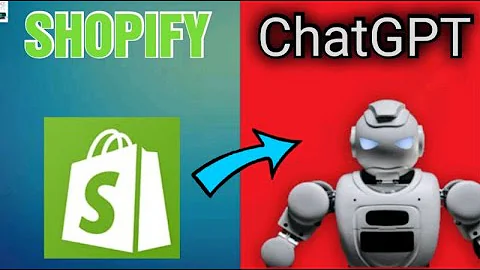Effective Methods for E-Commerce Client Lead Sourcing
Table of Contents
- Introduction
- Method 1: Using Instagram for Lead Sourcing
- Step 1: Finding Brands on Instagram
- Step 2: Analyzing Engagement and Followers
- Step 3: Assessing Brand Size and Potential
- Step 4: Identifying Influencer Collaborations
- Pros and Cons of Method 1
- Method 2: Using myip.ms for Lead Sourcing
- Step 1: Accessing myip.ms Website
- Step 2: Browsing Hosting Platforms
- Step 3: Filtering by Popularity and Visits per Day
- Step 4: Refining the Search Results
- Pros and Cons of Method 2
- Conclusion
How to Find E-Commerce Clients: Two Methods for Effective Lead Sourcing
In today's digital world, finding potential clients for your e-commerce business can be a challenging task. However, with the right approach and tools, you can streamline the process and identify qualified leads. In this article, we will explore two effective methods for lead sourcing in the e-commerce industry. We will discuss how to leverage Instagram and myip.ms to find potential clients, analyze their engagement and market size, and determine if they are a suitable fit for your business. So, let's dive into these two methods and discover how you can enhance your lead sourcing efforts.
Method 1: Using Instagram for Lead Sourcing
Step 1: Finding Brands on Instagram
Instagram has become a thriving platform for businesses, especially in the e-commerce sector. To start your lead sourcing journey, you need to identify brands that align with your interests or are relevant to your clients. Search for a brand on Instagram that you genuinely appreciate and want to work with. This brand will serve as your nucleus for exploring potential leads.
Step 2: Analyzing Engagement and Followers
Once you have found a brand on Instagram, take a closer look at their engagement and follower count. While engagement may not be of paramount importance for your advertising agency, it can provide insights into the brand's popularity. By assessing their follower count, you can gauge the size and reach of the brand, which is crucial for determining if they align with your target market.
Step 3: Assessing Brand Size and Potential
By exploring the brand's profile, you can gain valuable information about their collaborations, partnerships, and market reach. Look for influencers or other brands they have collaborated with and try to understand the scale of their collaborations. This will help you estimate the brand's potential and whether they would be a suitable client for your e-commerce business.
Step 4: Identifying Influencer Collaborations
Furthermore, observing the influencer collaborations on the brand's profile can provide insights into their marketing strategies. Analyze the types of influencers they work with and try to gauge the potential cost of these collaborations. This information can help you understand their marketing budget and their willingness to invest in advertising and promotions.
Pros and Cons of Method 1
Pros:
- Easy and simple method to start your lead sourcing journey
- Provides a gut feeling about the brand's potential and fit for your business
- Allows you to expand your ideas and potentially discover new clients
Cons:
- Follower count and engagement may not always accurately reflect a brand's success
- Limited information about the brand's revenue or profitability
- Not suitable for finding larger brands or clients with specific criteria
Method 2: Using myip.ms for Lead Sourcing
Step 1: Accessing myip.ms Website
Myip.ms is a powerful tool for lead sourcing that your appointment setters can utilize for high-volume lead generation. Visit the website (myip.ms) and navigate to the "Browse Sites" section.
Step 2: Browsing Hosting Platforms
Once you are on the "Browse Sites" page, filter the search results and select the "Hosting" category. Look for the hosting platform "Shopify Inc" as it is widely used by e-commerce brands.
Step 3: Filtering by Popularity and Visits per Day
To narrow down the list of potential clients, refine your search by popularity and visits per day. Select a range that suits your preferences, such as 300-3,000 visits per day, to focus on brands that have a moderate level of traffic.
Step 4: Refining the Search Results
Scroll through the search results and explore the brands that match your criteria. You can even download the results in Excel or CSV format for further analysis. Utilize the search function within the downloaded file to filter specific niches or product categories, such as eyewear or clothing.
Pros and Cons of Method 2
Pros:
- Provides an extensive list of potential leads for high-volume lead generation
- Allows for niche-specific filtering to target specific industries or products
- Offers detailed insights into hosting platforms used by e-commerce brands
Cons:
- Requires more time and effort due to the volume of leads
- Limited information about brand size, profitability, or marketing strategies
- Not suitable for finding smaller brands or clients with specific preferences
Conclusion
Finding e-commerce clients can be a daunting task, but with the right lead sourcing strategies, you can uncover potential leads that align with your business goals. By leveraging Instagram and myip.ms, you can analyze brands, their engagement, market size, and collaboration opportunities to determine if they are suitable clients for your e-commerce business. Experiment with these methods, weigh the pros and cons, and tailor your approach based on your agency's capabilities and objectives. With persistence and a targeted approach, you can expand your client base and achieve success in the e-commerce industry.
Highlights:
- Two effective methods for lead sourcing in the e-commerce industry: Instagram and myip.ms
- Using Instagram to find brands, analyze engagement, assess market size, and identify potential collaborators
- Utilizing myip.ms to browse hosting platforms, filter by popularity and visits per day, and refine search results
- Pros and cons of each method to consider for effective lead sourcing in e-commerce
- Tailoring lead sourcing strategies based on agency capabilities and objectives
- Persistence and targeted approach essential for expanding client base in the e-commerce industry
Frequently Asked Questions (FAQs)
Q: Can I use Method 1 to find larger, well-established brands?
A: While Method 1 primarily helps in identifying smaller or niche brands, it can also be used to gain insights into the marketing strategies and collaborations of larger brands. However, for extensive lead sourcing of bigger brands, Method 2 may be more suitable.
Q: How accurate are follower counts and engagement as indicators of a brand's success?
A: Follower counts and engagement on Instagram may not always accurately reflect a brand's success or profitability. Therefore, it is essential to consider multiple factors, such as revenue, market reach, and collaborations, to assess a brand's potential.
Q: Can I download the search results from myip.ms in a specific format?
A: Yes, myip.ms allows you to download the search results in Excel or CSV format. This enables you to further analyze the data and filter based on specific niches or product categories.
Q: Which method is more suitable for high-volume lead generation?
A: Method 2, using myip.ms, is more suitable for high-volume lead generation as it provides an extensive list of potential clients. The ability to filter by popularity and visits per day allows for targeted lead sourcing in specific industries or product categories.






















